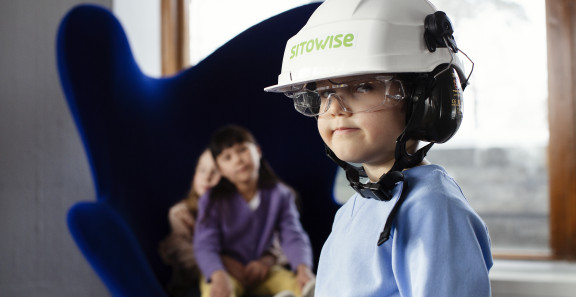Business Directors Timo Palonkoski and Jannis Mikkola know Sitowise's story perhaps better than their own pockets. Palonkoski joined Wise Goup through an acquisition in 2012 and Mikkola joined Sito in 2005. Both have held key positions at Sitowise from the very beginning of the company.
Culture shock turned into victory
When Sito and Wise Group merged, two companies with different growth stories were merged, but also two different cultures. However, both companies had a common goal. Without knowing, both were planning to expand – Sito from infrastructure to the building side and Wise from building to infrastructure.
The first strategy paper included things such as sustainability and digitalization, which were still utopias in most companies in the 2010s.
Timo Palonkoski, Sitowise
– The fact that in five years we have grown into an innovative expert and digitalisation of the built environment has required countless hours of work from the entire organisation. On the other hand, I feel that despite the challenge, the collision between two companies from different industries and two company cultures also enabled many of the insights that still carry us today. For example, the first strategy paper included things such as sustainability and digitalization, which were still utopias in most companies in the 2010s, but which have since become global megatrends and the mainstays of our operations, Palonkoski says.
A flexible strategy leaves room for innovation
Palonkoski and Mikkola say that Sitowise has succeeded very well in implementing the previous strategy.
– It has been great to see now, looking back, how many of the goals written in 2017 have been achieved, even though we have not returned to all parts extensively along the way, says Mikkola. It shows how successful the process and implementation were, and things got stuck in the back of our mind, Mikkola continues.
– Of course, we have turned the tide and clarified our goals along the way as well. In my opinion, flexibility is one of the elements of a successful strategy, as it allows adaptation to changes in the business environment, but also provides space to identify future needs and maintain an innovative work environment, Palonkoski says.
The culture of doing things together has started from the very beginning of Sitowise and has only grown stronger over time.
Jannis Mikkola, Sitowise
As concrete examples of the successes of the strategy period, Palonkoski mentions the achievement of growth targets both at the company level and in terms of business areas, the first steps of internationalization, the development of competence to meet the changing needs of customers, and the pioneering of sustainable work in the industry – this is how it starts.
– The culture of doing things together has started from the very beginning of Sitowise and has only grown stronger over time. Already in the first days of the merger, the phones rang, and joint projects were made, says Mikkola. Cross-feedings between businesses and recent large project entities, such as the resource-wise tram in Vantaa and the Keilaniemi underground parking, have been important. Both are big successes in which we are together, crossing the boundaries of business areas, providing added value to our customers, Mikkola continues.
Thanks to employees
Finally, Palonkoski and Mikkola point out that the successes of the strategy period are not due to a well-prepared strategy, let alone its authors, but thanks are primarily due to the employees.
– In many parts, the past five-year period has been a rather bumpy journey that we would not have survived without committed and enthusiastic employees. We hope that in the next period, too, we will succeed in articulating the strategy in such a way that everyone has the opportunity to find themselves and their role in its implementation, and that we are also able to take care of our most important resource, our knowledgeable employees.
